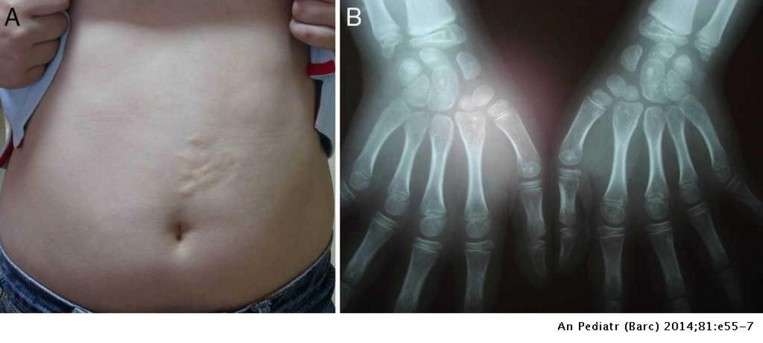(Buschke-Ollendorf syndrome, disseminated lenticular dermatofibrosis)
The prevalence is estimated at 1/50,000. Sporadic forms or dominant autosomal transmission of a mutation causing a loss of function of the LEMD3 gene (12q14.3).
Variable association of:
- cutaneous lesions: presence of naevi or nodules of connective tissue that are either scattered, covering the skin of small papules , or localized and larger, forming yellow plates. These nodules are rich in elastin (elastomas) or in collagen (disseminated lenticular dermatofibrosis)
- osseous lesions: areas of osteosclerosis in the form of hyperdense small round spots, of 2 to 10 mm in diameter, mainly at the level of the epiphysar zones of the tubular bones, in the shoulders and also the elbows, wrists, pelvis, knees and ankles. Those lesions are benign and most often discovered by hazard. The number of lesions varies from a few to many.

In the familial forms, the patient can present with osseous and cutaneous lesions, or only one type of those clinical manifestations. Melorheostosis (localized cortical hyperostosis in the tbular bones resembling "dripping candle wax) may be present in some patients. The age of onset and the presence of cutaneous and osseous lesions are variable.
Osteopoikilosis lesions can also be observed in case of cleft palate, cardiac or renal malformations, and autoimmune disorders.
Differential diagnosis: bone metastases of small size but osteopoikilotic lesions do not fix the radioactive tracers.
Anesthetic implications:
benign disease without anesthetic implication.
References :
- Perin S, Rabacch I, Pascolo P, Dibello D, Ventura A.
A spotted bone.
J Pediatr 2016; 176: 220-1.
Updated: June 2019